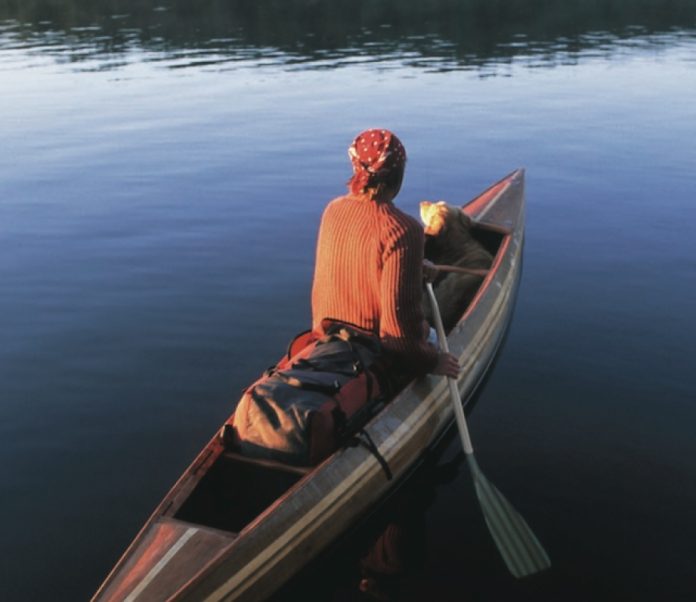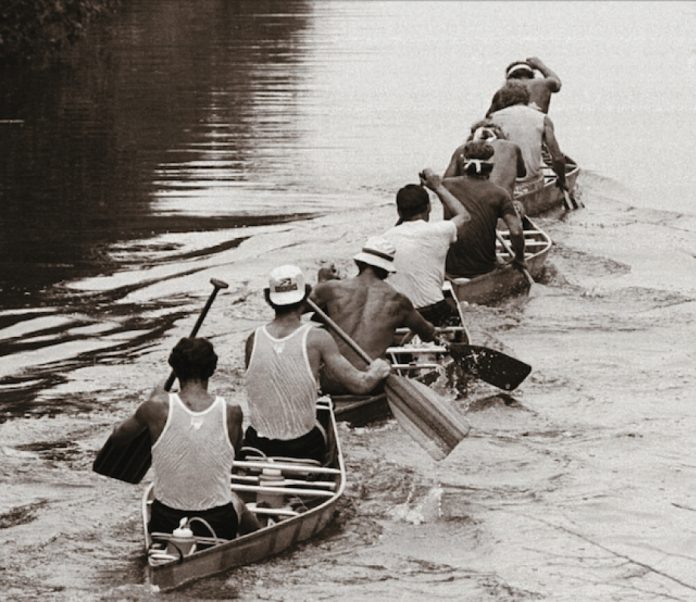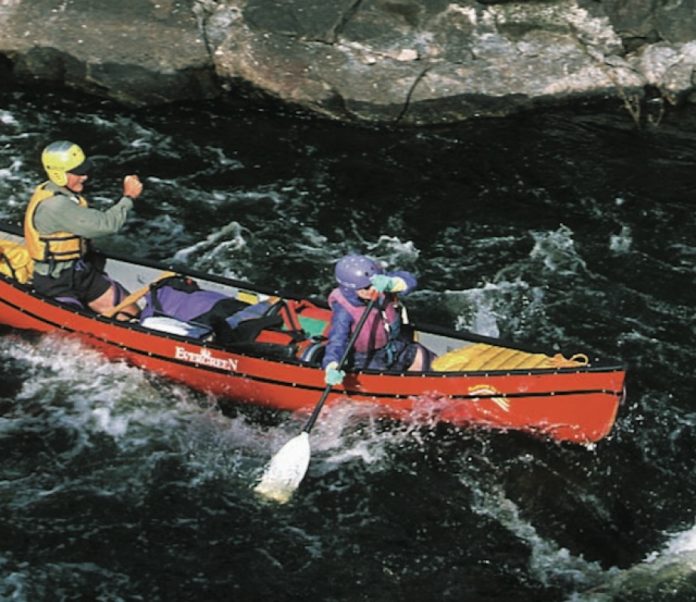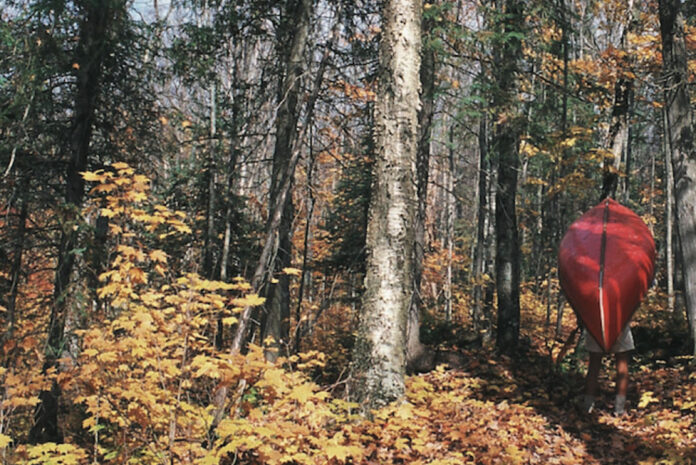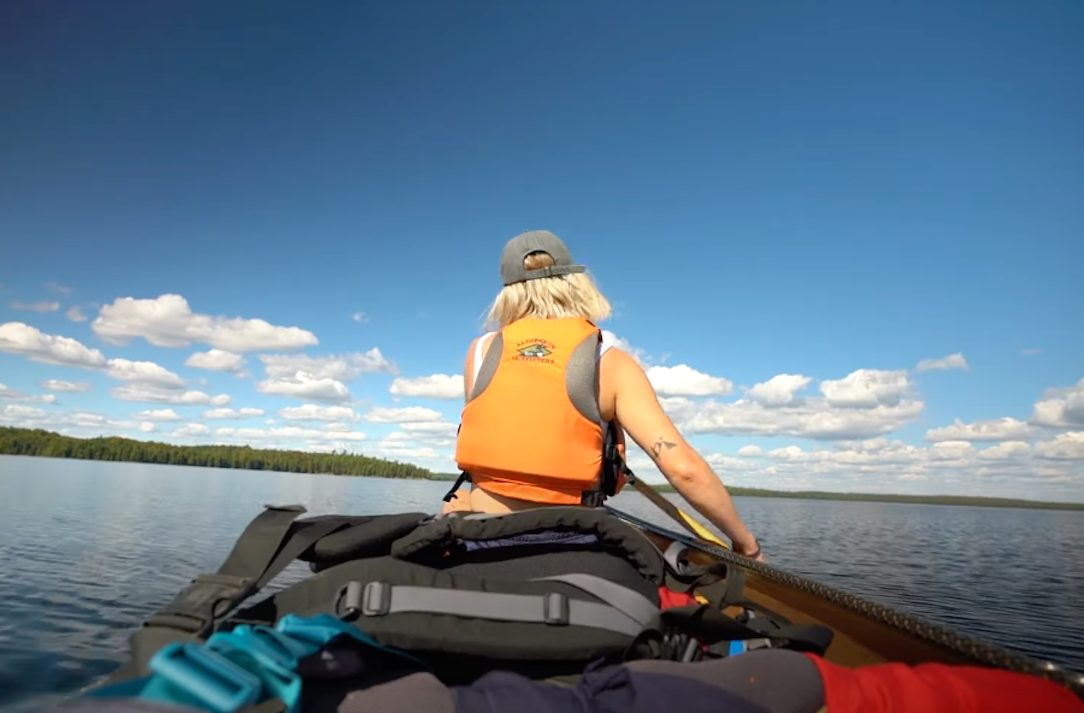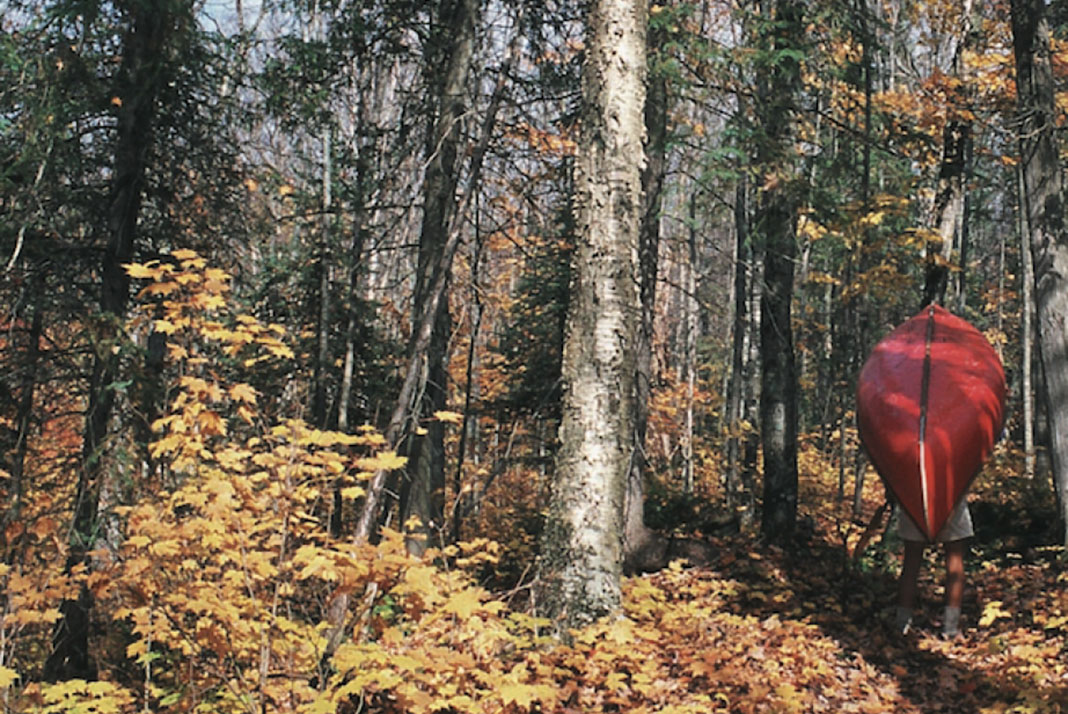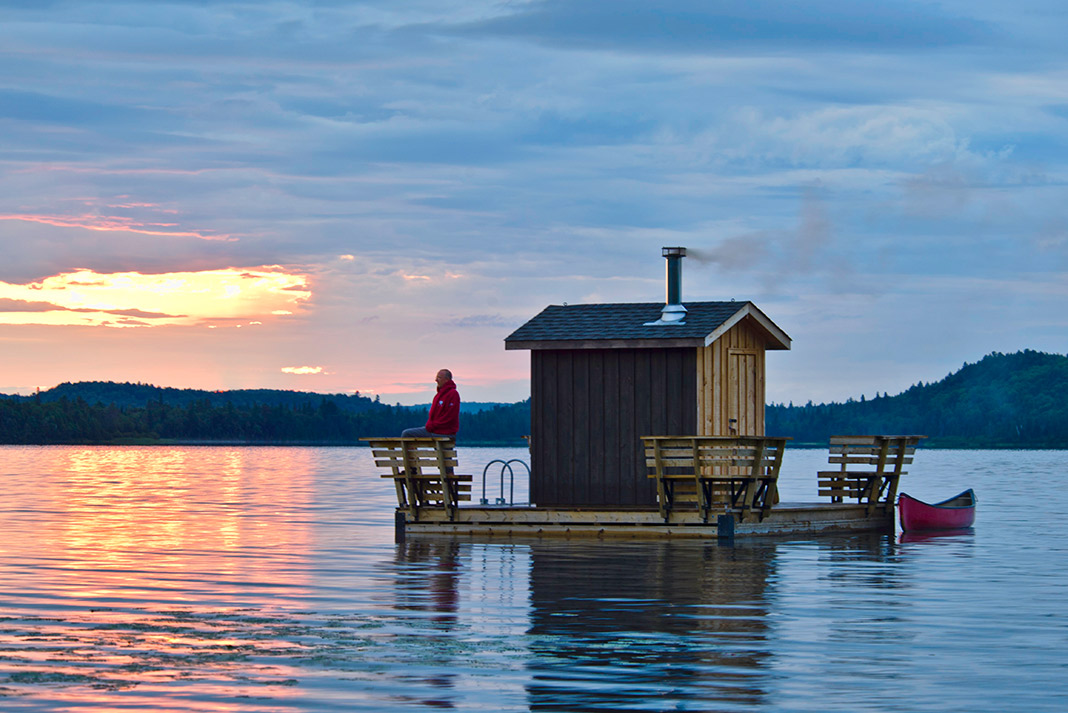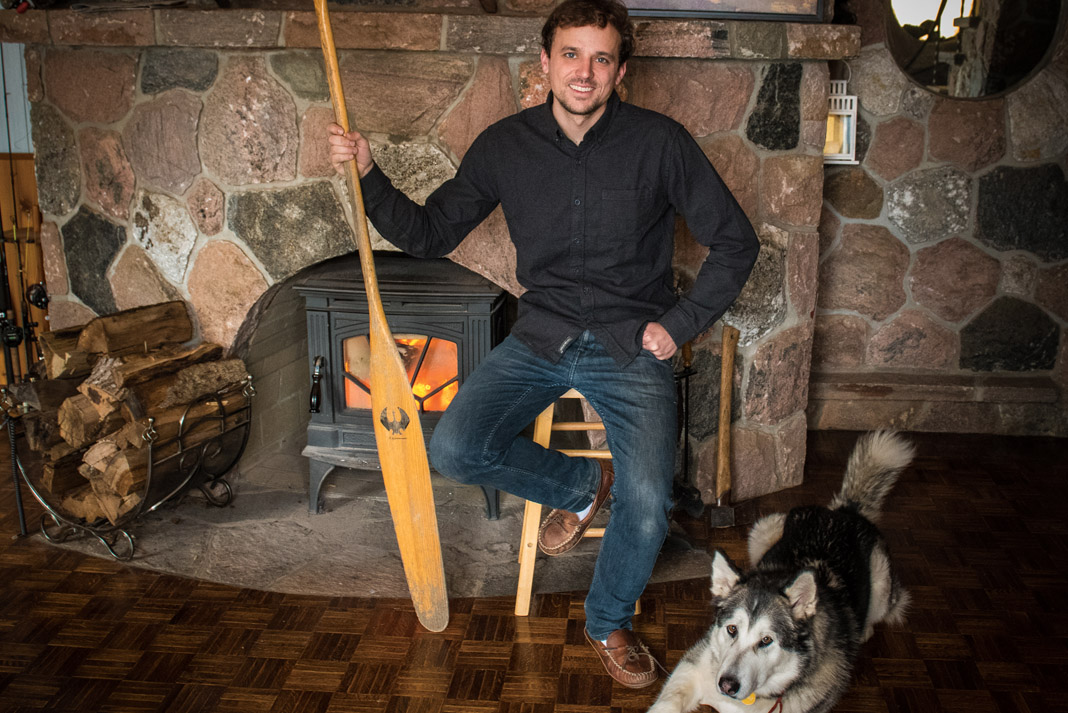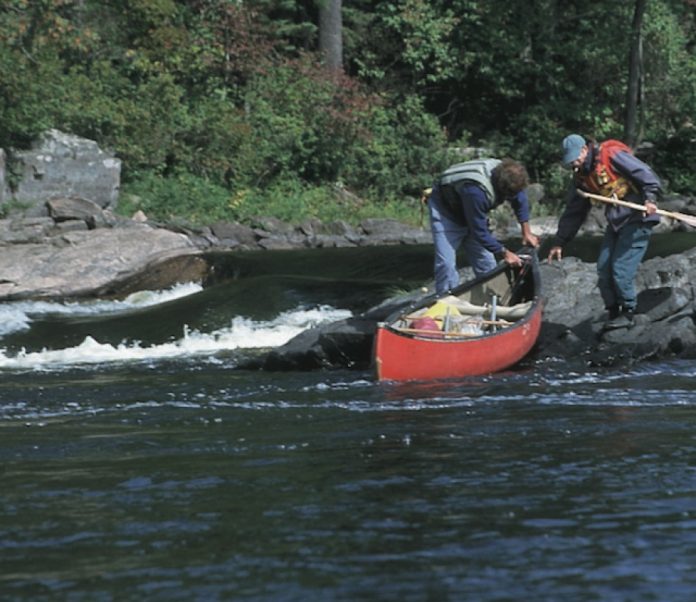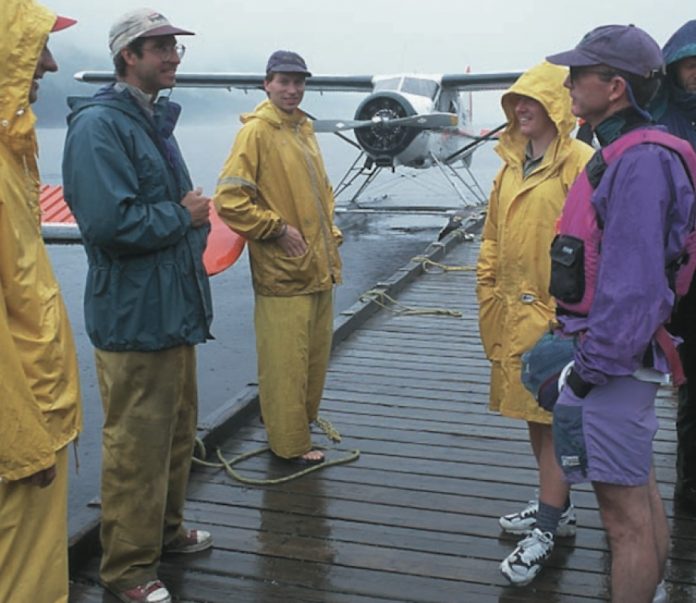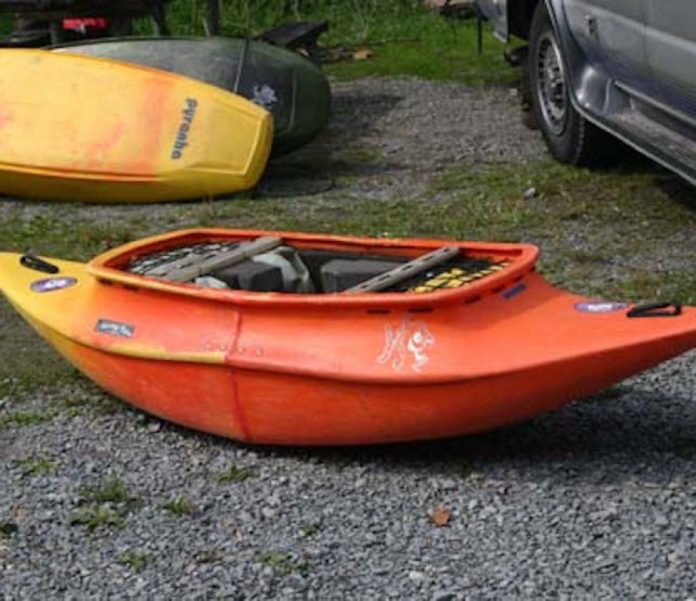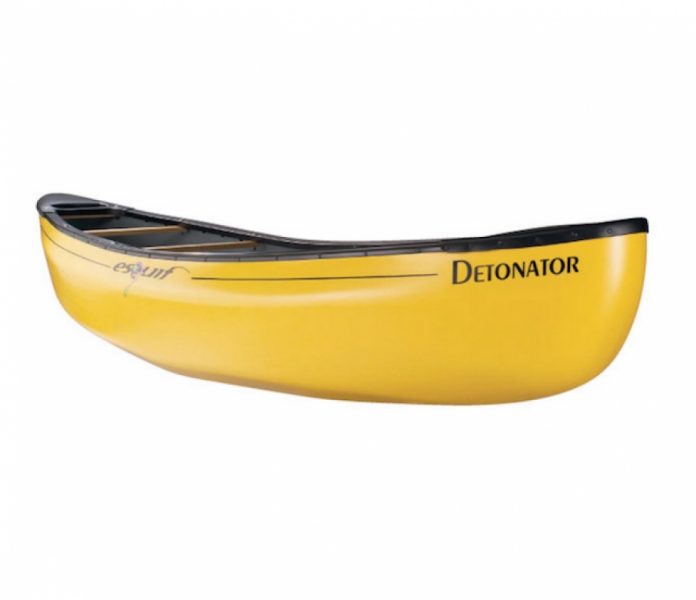Creative Silence [refers to] the impact of solitude on the mind, the wakening of ideas and thoughts normally hidden…[and] the emergence of concepts often lost owing to interruptions and responsibilities. During such times one drinks from the deep wells of the past. – Sigurd Olson
Solo canoeing is as much about exploring ourselevs as it is about paddling technique and hull designs. The amount of skill and concentration required to handle a solo canoe is significant and, by providing a focus for the mind and emotions, it can leave us with a sense of solace and inner peace. Though often associated with remote wilderness sojourns, this sense of solitude, and what Sigurd Olson aptly called creative silence, can be found almost anywhere in a solo canoe.
Using language to describe the solitude of solo canoeing is a bit like trying to portray ice cream through dance;only those who have experienced it before will understand. The same difficulty arises when trying to show people what solitude is by taking them there, as so much of it comes from within.
THE SEARCH FOR SOLITUDE
Much like the notion of wilderness, solitude is something projected onto the natural world that originates on the internal landscape of the mind. For example, it was through this process that the early European explorers and settlers labeled much of Canada as wilderness, when, to the First Nations living there at the time, it was clearly their home. Solo paddling allows us to locate solitude within ourselves, as it enables us to plot a route back to it time and again, each time with greater ease and precision. As a result, the path to creative silence, with practice, can become so familiar that one is capable of finding the way there even when surrounded by a group of other paddlers.
In the Zen tradition, there is a meditative ritual known as Sessin, where a group of people congregate together, but meditate individually. This is also true of the solo paddler’s search for solitude. It is rooted in the belief that one can find a quiet meditative state while continuing to embrace the company of others. By finding that famil- iar route toward the internal landscape of the mind, the canoe can act as a vehicle for going inside toward the realm of creative silence, regardless of external distractions and circumstances.
This inward journey seems to foster a sense of focus, and can free the mind from extraneous thoughts so as to contemplate one’s surrounding and to concentrate on the task at hand. This is important when manoeuvring a solo canoe, as it demands a synergy between paddler and canoe that is unmatched anywhere else. In its most refined form, the solo experience is a dance between paddler and the natural world mediated only by the canoe, to a point where the three become one, and the distinction between subject and object is erased. Pauline Johnson, who grew up in the late 1800s near Ontario’s Grand River captures the sentiment in her poem, The Song My Paddle Sings:
August is laughing across the sky,
Laughing while my paddle, canoe and I
Drift, drift
Where the hills uplift
On either side of the current swift.
The river rolls in its rocky bed;
My paddle is plying its way ahead;
Dip, dip
While the waters flip
In foam as over their breast we slip.
And up on the hills against the sky
A fir tree rocking its lullaby
Swings, swings
It’s emerald wings
Swelling the song that my paddle sings.
On both lake and river, the manifestation of such poetry can be seen in the movements of experienced solo canoeists. From the grace and precision of each paddle stroke to the fluid efficiency of their body language, they make the relationship with the canoe seem somehow enchanted, or even spiritual.
ILLUSIVE SOLITUDE
Through these graceful movements, practiced skills, unwavering focus, and quiet introspection, the rejuvenating energy of solitude can seem to wash over us, but only if we let it. Creative silence, too, can only be heard by carefully listening. It can all be quite illusive, as often our thoughts and senses are dammed with distractions, daily rituals and responsibilities. To listen effectively requires the attention of both body and being, constantly delving deeper into a contemplative state, all the while honing our paddling skills through consistent practice.
Regardless of the level of our solo paddling skills, the important thing is to practice regularly, and always listen for that creative silence. The creative silence is the call that connects us to our natural and cultural heritage. In so doing, we not only become more closely linked with the world around us—thereby becoming its stewards—but we also gain a new depth of appreciation and under- standing of ourselves, and of other people.
When he’s not out paddling with friends, Bryan Poirier coordinates education programs at the Canadian Canoe Museum and teaches solo canoeing as an ORCA canoeing instructor.
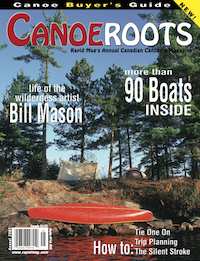 This article first appeared in the Summer 2002 issue of Canoeroots Magazine. For more great content, subscribe to Canoeroots’ print and digital editions here.
This article first appeared in the Summer 2002 issue of Canoeroots Magazine. For more great content, subscribe to Canoeroots’ print and digital editions here.



